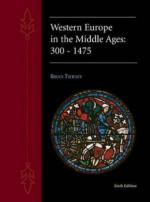|
This section contains 1,059 words (approx. 4 pages at 300 words per page) |

|
Chivalric Knight. In addition to "those who worked" (peasants) and "those who prayed" (clergymen), the medieval economy enveloped also "those who fought." The mental and moral disposition of the medieval knight has become perhaps his most striking characteristic. The rules to guide his behavior formed the code of chivalry, the name of which is derived from the French chevalier, meaning horseman. During the early Middle Ages, chivalry was a simple code that existed between fighting men to govern their relations with one another. In its later guise, however, the knight was expected to be loyal to his lord and devoted to the church, which supported its ideals. The medieval knight was thus expected not only to possess a host of manly and military qualities (to be utterly courageous, to fight fairly, and never to seek victory through trickery and cunning), but...
|
This section contains 1,059 words (approx. 4 pages at 300 words per page) |

|




